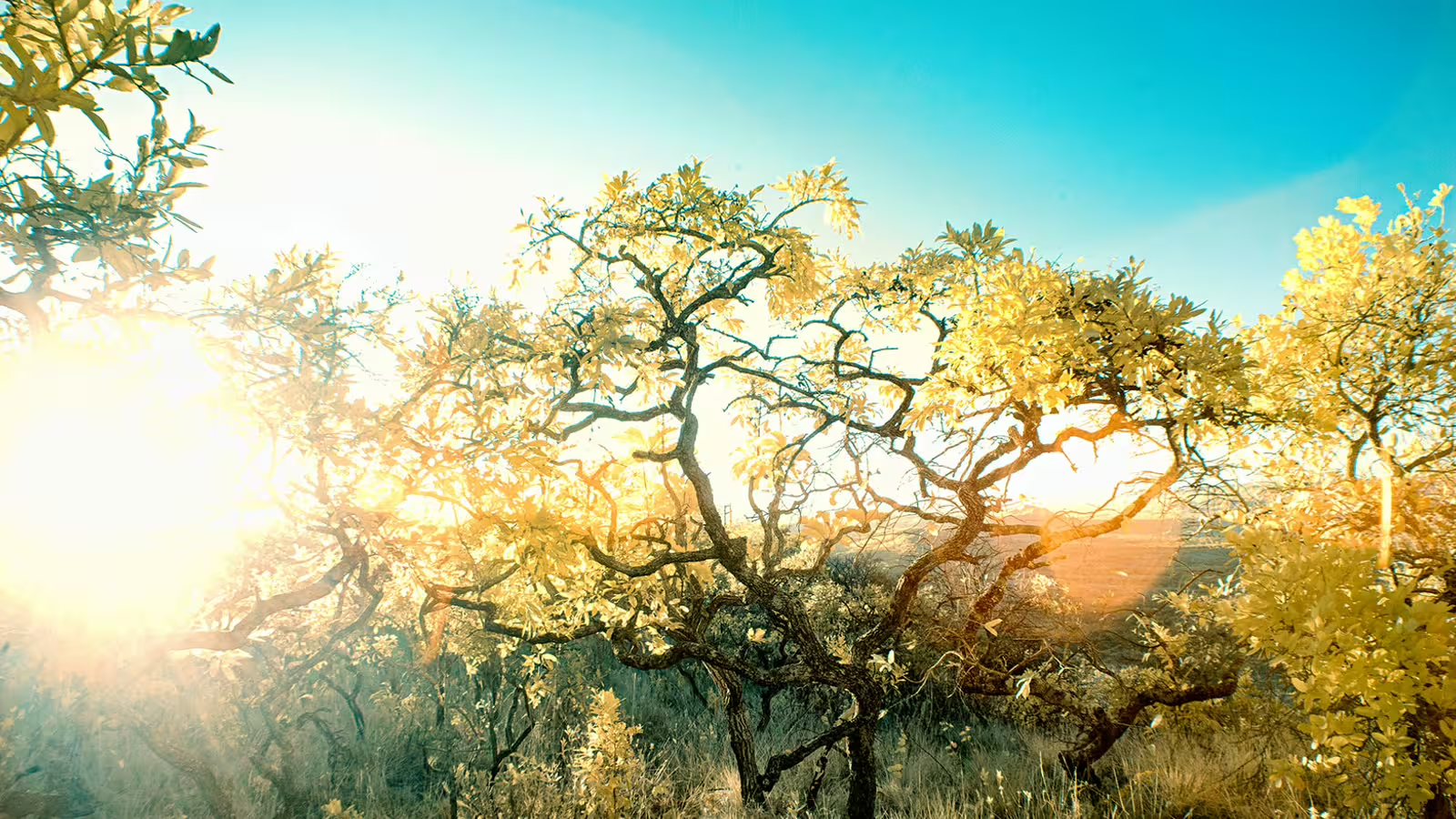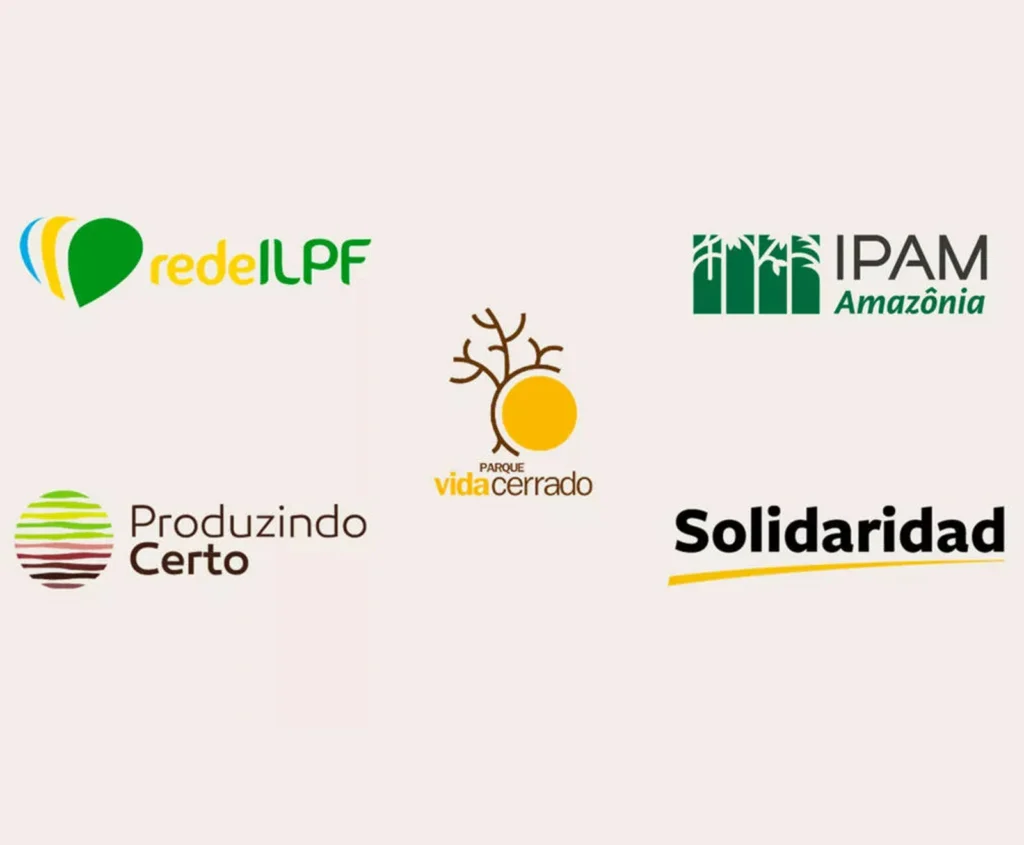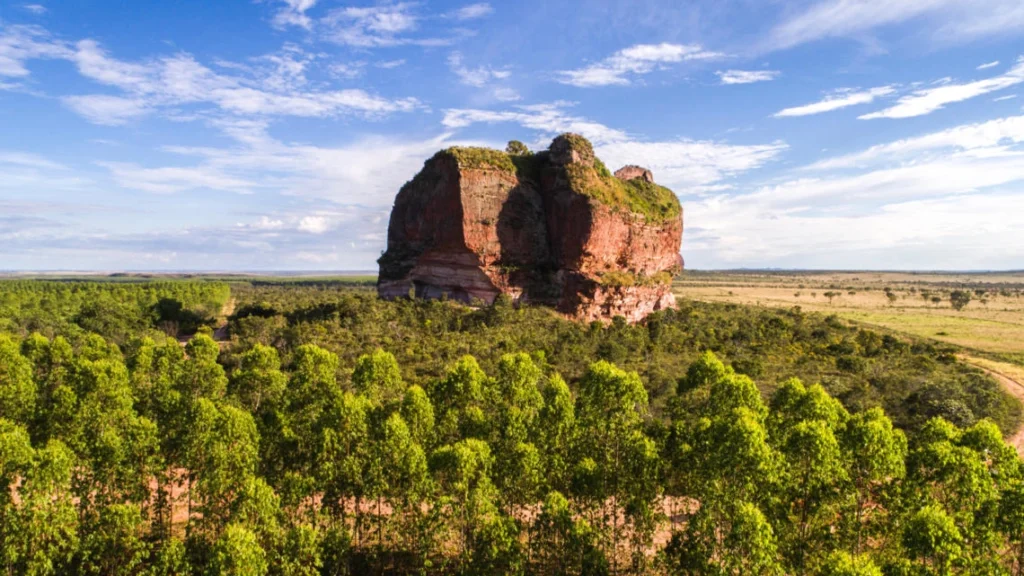Authors
The Soft Commodities Forum
Leia em português – Perspectivas do Produto: Em busca do equilíbrio financeiro e ambiental no Cerrado do Oeste Mato-Grossense
In Western Mato Grosso, Brazil, producer Leandro Bortoluzzi, from Lajeada Farm, has adopted a series of sustainable practices and looks forward to clearer rules for the carbon market.
Leandro is one of several agricultural pioneers who seek upskilling and opportunities to make their production more sustainable and regenerative.
Located in the municipality of Campos de Júlio in western Mato Grosso, and managed by the Bortoluzzi family over four decades, Lajeada Farm has enrolled in the Farmer First Clusters (FFC) initiative. It will receive a socio-environmental diagnosis of its activities – with the support of the sustainable agri-tech platform Produzindo Certo.
We provide qualified technical assistance to assess the level of sustainability of farms with over 70 indicators, cross-referencing this information with public records and satellite imagery,” explains Charton Locks, COO of Produzindo Certo. “We’ve observed some initial apprehension among producers, but upon receiving the diagnostic report, they often discover that they are already implementing numerous sustainable practices.
Leandro has already implemented important practices to enhance sustainability on his farm. However, he highlights the crucial need for clearer rules regarding the financial benefits of investing in environmental preservation.
Providing farmers with tangible financial advantages for adopting sustainable farming practices is essential to encourage widespread adoption and ensure the long-term viability of sustainable agriculture in the Cerrado.
Q: Could you briefly tell your story in agribusiness: how many years have you been in the profession and how long have you been working in the region?
My father has been here since 1981 and I was raised on the farm from a young age. I helped clean the orchard since I was a child. I enjoyed watching my father work. He studied agronomy and I decided to follow the same path, graduating in 2000 and started working on the farm the following year. That’s how it is once you get a taste for the land, you can’t let go.
Q: What does sustainable agriculture mean to you?
It means producing in a way that does not harm nature and operates within environmental protection regulations – for example, reducing the use of chemical inputs and favoring biological alternatives. It also means ensuring the well-being of employees. Sustainability is not only in the field but also encompasses social aspects.
Q: From your perspective, what are the main challenges and opportunities related to sustainable soy production in western Mato Grosso? Could you also talk about how the deforestation agenda fits into your vision of sustainable agriculture?
One great opportunity is the region’s climate, which helps a lot. The biggest challenge is the lack of information. For example: you have an area that can be legally deforested, but what is the value of the carbon credit payments to conserve this area? What is the opportunity cost of not producing there, not growing food or creating jobs? It needs to be worthwhile financially. I’m talking about legal deforestation – in private surplus legal reserves, within regulations. There needs to be a plan for this. I understand it needs to be sustainable for the world, but it also needs to be sustainable for the farming business.
Q: Regenerative agriculture is increasingly recognized as a prominent trend in sustainable agriculture. What are your perspectives on regenerative agriculture?
On our farm, we implement regenerative agriculture through the use of biological products and sustainable soil management. We avoid using chemical inputs, applying them only when there is a real need. It is beneficial to manage soils because it creates a positive cycle. We use millet and brachiaria straw, the cattle eat the straw and as they return to their dwellings, they fertilize the soil and ultimately facilitate the management of soy and corn. This is regenerative agriculture: it improves the biodiversity of the soil.
Q: What are the most important sustainable production techniques in your daily operations on the farm?
It starts with planning: we run soil analyses to understand what the soil needs – no more, no less. Then, we also plan the planting of a variety of crops and manage fuel to reduce greenhouse gas emissions. Through telemetry machinery management, we’ve already managed to reduce fuel costs by more than 20% – so it’s sustainable for business and the environment! We also made a big investment in solar energy, which today is enough to sustain the entire farm headquarters. We also changed the grain dryer fuel from pure wood to chips, decreasing wood consumption by about 35%. This implies a great reduction in carbon emissions reduction.
Q: What are the most important markets for your business?
Today, our main products are soy, corn and cattle. We sell soybeans to agri-traders who demand high sustainability standards and pay a premium for these products. Corn is often bought for ethanol plants, with returns for the planet in the form of reduced carbon emissions and for us as a by-product used as Distillers Dried Grains (DDG) livestock feed. We also market our cattle with large national meatpackers that also have high environmental standards.
Q: In your view, what are the main challenges for producers in Western Mato Grosso in transitioning to sustainable agriculture and, more specifically, in adopting sustainable production practices such as soil conservation, waste management, water resources management and integrated pest management?
The biggest challenge is getting started and finding buyers willing to commercialize these products. Another issue we encounter is that some practices, such as waste management, have high costs without an immediate return.
Q: What incentives and assistance are necessary in the region to support the successful adoption of sustainable production practices and compliance with the Forest Code?
Some agri-traders, for example, already provide good benefits for sustainable practices, paying bonuses per harvest.
But regarding legal deforestation, we need clearer rules and prices regarding carbon credits, which could also offer an opportunity to access carbon markets as an additional incentive for compliance.
Currently, there are many discussions about carbon credits and the creation of carbon markets, but in practice, the conditions to materialize them into funding for restoration and conservation for producers still need to be created.
Q: From a sustainability perspective, how do you envision your farm and the region evolving in the long-term future? And how can the FFC initiative support your vision?
This needs to be well discussed. Sustainability is key to preserving the environment, but the producer must also be valued and there needs to be a balance with financial imperatives. In this way, everyone wins: the company that buys carbon credits, the sustainable producer, society and the environment.
Disclaimer: The views and opinions expressed in this article are those of the interviewee.


